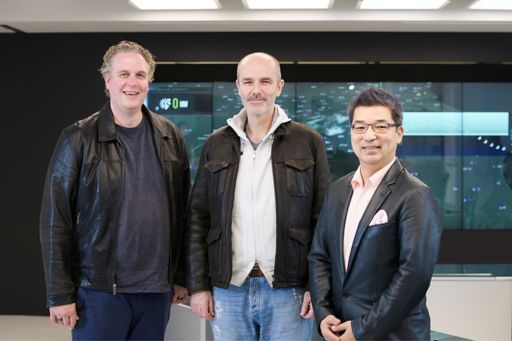The post-COVID-19 world includes a mixture of great expectations and anxiety regarding uncertainty. In corporate management, there is a movement to steer to data-driven “digital management” in order to overcome discontinuous changes by detecting signs of change and variations in tactic knowledge.
If digital management becomes the new normal in a true sense, what will corporate management be like? In this article, Masayuki Chatani and Tim Denley at KPMG Ignition Tokyo (KIT) are joined by KIT’s Junyu Zhang (Jerry), Director, Head of Strategy Office, in a three-way conversation.
Balance Between Enhancing Transparency and Accepting Uncertainty
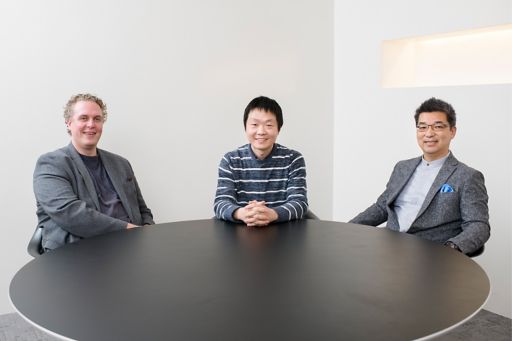
(Masayuki Chatani, Representative Director & CEO of KPMG Ignition Tokyo and CDO of KPMG Japan (right); Junyu Zhang (Jerry), Director, Head of Strategy Office of KPMG Ignition Tokyo (center); Tim Denley, Board Member & Partner of KPMG Ignition Tokyo (left)) *Professional affiliation and official position in the article are at the time of publication.
Chatani: We invited Junyu Zhang to join us in our discussion to fantasize about and envisage the “forefront of digital management” because he had assumed a major role in preparing the foundation and operation of KIT.
Denley: This does not apply only to KIT but I think the most important thing when launching a new organization is the “right combination of people.” People with sensibility who tend to plunge forward into relatively anything and people with logic who take action after thinking “wait just a minute. We need to straighten things out before making judgments” have to fit together well. I think the latter type are especially important. As Chatani-san and I are the former type with strong sensibility, having someone like Zhang-san who takes on everything “that must be done appropriately” in launching an organization is really encouraging.
Talking about launching an organization, I would like to talk a little bit about the “language problem” that Japanese companies are facing today.
People like us who are on the technology side sometimes says things like “we will enhance transparency” within the organization with the power of technology. However, people on the management side express the same thing by saying “we will look at the operation” of the company with the power of technology. I think that a slight difference in the meanings and expressions can occur anywhere depending on the standpoint.
Chatani: If there are three divisions—the IT Division, Operation Division and Administration Division—each division uses different wording, emphasizes different things and has a different sense of values. What concerns them the most when something happens is also different. This is probably why they feel like they are not engaging well with each other.
Zhang: That’s true. When introducing a new technology at traditional Japanese companies, “something that connects the past and the future” will be necessary. After all, the standpoint of people who have been carrying out traditional management and the standpoint of those fantasizing about and envisioning what can be done in the future will not change unless they try to understand each other.
It is certainly possible to enhance “transparency” with technology. For instance, a company settles its accounts and announces a financial report on its management every year. However, if all the data can be drawn from the job sites in real time, this will enhance transparency, as it will be possible to understand the situation more accurately and announce it internally and externally not just on a yearly basis but much earlier. It is now becoming important to explain this to people who have been carrying out traditional management and persuade them of the benefits.
Chatani: Meanwhile, many projects that succeeded in the past were in fact implemented by people at the top who were not very transparent and dared to keep things out of sight and then develop things from there. They wanted to “promote the project secretly to avoid various people saying different things and crushing it.”
Denley: Listening to Chatani-san, I recalled an episode about HondaJet which I heard from a professor at the University of Tokyo recently. It was about a project regarding the manufacture of aircraft which was initiated by Soichiro Honda. This project had been safeguarded for many years, which is why it is going through a major development now.
Zhang: I guess it depends on whether the project is “intentionally hidden based on a strategy” with a solid future vision. However, we cannot help but feel some sort of discomfort about things that are uncertain and opaque. Especially as the management teams of well-established Japanese companies have a strong culture of being excessively cautious, which is expressed as “knocking on a strong stone bridge before crossing it,” how this can be overcome or accepted is a difficult challenge.
Chatani: That’s true. Everything that can be assembled logically eventually reaches the same answer. That’s why companies tend to be faced with the dilemma of not being able to differentiate themselves from others. The more everyone analyzes and puts together logic, the more they end up going in similar directions...
Denley: I think that business executives that achieve great success are those that excel not in logic but in the realm of “art.”
Such a trend may also be seen in the development of technology. Looking at VR and AR technologies, for example, I have some kind of sense that “VR and AR themselves will not develop that much but the underlying technologies may develop in some other forms, though I cannot clearly theorize that right now.”
I think it will be possible to look at what actually happened in a few years’ time and retrofit theories about the impressions we had before.
Why Do GAFA Have Unique Business Structures?
Chatani: Talking about the “artistic” aspect of business executives, I would also like to talk about the unique characteristics of companies. I assume that there were many banks and trading companies listed among large corporations when Zhang-san started working. However, their positions have been replaced by companies such as GAFA. These companies all seem unique.
GAFA are often referred to as a group of “IT companies.” Though they all use technology, they do not create the same products. The business categories of Google, Apple, Facebook and Amazon are in fact completely different. They share a common ground of being based on technology and using computers but what they are doing is entirely different. This is true not just of GAFA but also of China’s Baidu and Alibaba.
Given this, it seems that it is rather difficult for human-centered companies to create distinctive characteristics. Each person is different but is reasonably similar in some areas. On the other hand, technology can be processed in various ways. I imagine that this is why it is easier for these companies to have unique business structures.
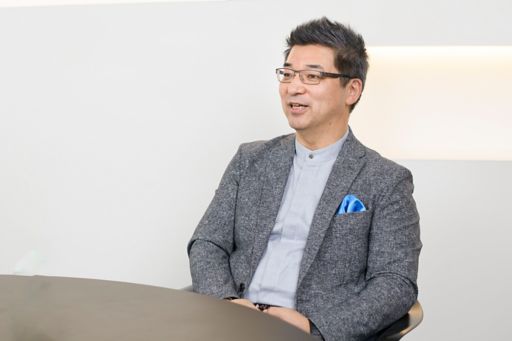
Denley: I think that the presence of cultural inheritance associated with the people involved also has some effect. It used to be common that “a certain type of people with the same characteristic joined the company and grew based on the same kind of foundation.”
Chatani: Indeed, at Japanese companies, there was a recruitment channel through which students were “introduced from a university seminar group” and so it may have been rare to have different types of people joining a company.
Denley: On the other hand, Elon Musk at Tesla, Inc., for instance, is operating an electric vehicle business based on the concept that “as the current industry is destroying the earth, we must be sustainable from now on.” At the same time, he is also presenting a very straightforward vision that “business will not save the earth and that’s why I want to go into space with SpaceX.”
Also, Google started its business based on the noble philosophy of “Don’t be Evil.” Apple and Facebook also had their social significance, which served as the base of their products and services and attracted people who sympathized with them. These characteristics are clearly different from conventional companies.
Zhang: Earlier, you said that there are people with sensibility and people with logic when launching a new organization but I think that the logic part can eventually be covered by AI and machine learning. On the other hand, I don’t think the significance and sensibility part can be covered.
When engaging in this discussion, I always visualize the image of “growing a plant.” The same technology can bloom differently in different countries, cultures, societies and organizations. This is probably the result of adjustments made by the management.
Chatani: If we use the example of a plant, it is rather unimaginable to succeed by planting just one seed. We start by planting many seeds, leave only the ones that start growing and tend them. This will lead to an aggressive overlapping investment but you won’t achieve good results if you don’t allow this. Even if we plant just one seed with the determination to “produce flowers,” this may not necessarily be achieved.
Zhang: You’re right. I also think that it is important to plant and grow a seed with vision even if we do not know what it will grow into, whether it will grow to be a fruit or vegetable.
An Age May Come when Management Meetings Consist of “One CEO and Five AIs”
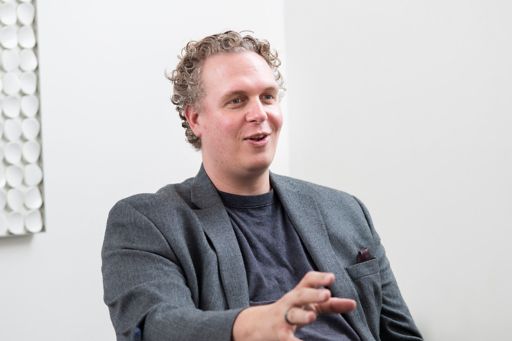
Chatani: You mentioned that most logic can be covered by AI and machine learning but that the sensibility part will be assumed by people. If so, management meetings with “one CEO assisted by about five AIs” may become a reality.
Zhang: You mean a type of management where the CEO decides on the company’s future direction while discussing things with the AIs?
Chatani: That’s right. As AIs can access more data and at a faster rate, they can respond to the questions posed by the CEO right away. If human beings were involved, they might bring the questions back to their office to “do some research” but AIs do not have to do that. Therefore, this may lead to much faster business development.
Also, while people may say “it’s something like this” based on their vague memory, intuition or experience, AIs will be able to make decisions based on facts. We can therefore imagine that the CEO’s decision will be more accurate.
In that case, the definition of a megacorporation may change and bigger companies may break up into small companies. An age may come when units of small companies with one CEO and multiple AIs promoting business on a small scale are operated as mega corporations.
Denley: That’s precisely the economic community that I am envisaging. When we think of a company, there is a preconceived idea of a “large company” where various divisions and businesses are working together. A future company and society could take the form of businesses broken up into small units that are existing together with each company while exercising a high level of expertise.
I am envisaging an age just like that of the medieval guilds.
Chatani: This means that companies that went through the age of guilds and merged into mega corporations after the industrial revolution will be broken up again.
Denley: In a sense, the reason why mega corporations were formed was to ensure quality and enhance efficiency but if it becomes possible to provide the same or higher efficiency and quality even after breaking up, I assume that companies will be breaking up spontaneously.
This is precisely what is actually happening with technology in the current world. If AI is further developed, I expect that the dispersed companies will stick together not through human connections but via linked computers. This is why possibilities will expand as a result of dispersion and, to put it the other way round, an age will come when the world will not work out unless companies are dispersed.
Chatani: Cases where AIs that are familiar with internal information consult with each other and negotiate deals may increase in the future.
When negotiations are conducted between people, the person who came up with the project has to talk to 10 people in 10 business divisions. When doing so, they usually start with people who are “easy to talk to” while people who are the most difficult to talk to are consulted last. However, AIs will probably be able to mutually make data inquiries instantly and promptly complete adjustments.
Zhang: All conversations and negotiations will be replaced by machines while people will be doing what lies ahead, in other words, “what has to be done by people and what only people can do.”
Chatani: After all, computers are neutral in both positive and negative ways and can work 24 hours a day.
Denley: Business development will probably speed up dramatically. Not only that, but this will also lead to better risk management. One of the reasons for becoming a megacorporation is to “reduce risks” but I think that most internal risks in the past were caused by human beings such as misunderstandings and differences in awareness.
Computers should be able to reduce such risks. Though it will naturally be necessary to control the AIs and monitor whether they are functioning properly in a different way, the development of the “AI In Control” that can control AIs will make it easier to control the risks between companies as well as between divisions, and thereby facilitate diversification.
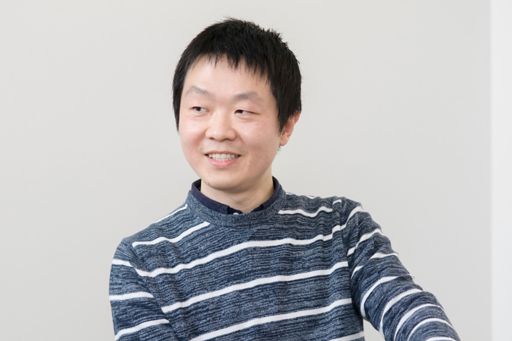
Chatani: Meanwhile, if companies become too small, it may become difficult to diverse risks. Increasing formability is also an aspect of risk diversification. How do you think this can be resolved?
Denley: That’s exactly where “transparency” comes in. By enhancing transparency, it will be possible to see risks that could not be seen before. I think this is precisely the role of the AIs to detect them.
In other words, if business deals are negotiated between AIs to determine how collaboration and cooperation can proceed, the AIs will probably suggest something like this: “We can envisage this much risk if we undertake this business with this company. On the other hand, there will be this much risk if we partner with this other company. Now, it is up to the CEO to decide.” And if the business proceeds based on the decision of this CEO, the image of the business executive will be quite different from what it is now.
Chatani: Such a world may be polarized into a business layer and an infrastructure layer.
Denley: The business layer, in a sense, will be close to craftspersons.
Zhang: In order to realize such a society, it will be necessary to change the entire social structure. In addition to AI management and data security, what kind of safety net should be prepared in case an individual fails, though this may not be within the scope of the private sector.
Denley: You’re right. Social changes such as those we just talked about have already started. For instance, when startups in Silicon Valley think of a new service, they say, “We need a payment function, so let's work with a startup that is good at that field.” This type of thinking, I think, will increase going forward.
Zhang: In some ways, this means that the value that is provided will change. In other words, something that can only be done by human beings and not machines will be provided.
Chatani: Naturally, human networks will also have an effect. That’s why, though this may sound like a joke, it may become an advantage if AIs “can drink alcohol.”
Denley: It may not be so far away in the future that AIs will become such a casual existence. That’s why we must start changing ourselves. However, it should be noted that “the extent of these changes will be far greater than what we are envisioning.”
Meanwhile, the sense of distance and speed for this to become a reality, I think, will be gradual, taking 10, 20, 30 and 50 years. If you believe in the technological singularity, the changes will be quite enormous! The integration of human beings and computers is also conceivable.
Chatani: For certain tasks, the power of AI is already exceeding that of human beings. Therefore, AIs that exceed human beings can well be a reality. However, whether human beings can be replaced by AIs seems to be quite a different matter.
Zhang: Well, how about AIs creating AIs?
Chatani & Denley: That is quite possible!
Denley: This may be just a dream of mine but I think it would be a good idea to use the capabilities of computers to exceed us in areas that cannot be undertaken by human beings.
Zhang: That would be like an expansion of human beings. Talking about such things, I always have a hard time talking with my children about what they want to be in the future and how much of what they are learning now at school will be useful. Schools are trying hard to teach children about the world of “logic” but as logic is expected to become impractical in 10 to 20 years from now, some generations may experience a great deal of difficulty someday.
Denley: That’s quite true. Especially when we look at AIs in Japanese culture, it is quite different from looking at AIs in overseas cultures. In many cases, robots have the image of something that helps us like a friend or a hero in Japan. However, robots are often considered as a threat in the U.S. This difference in how robots are viewed is quite deep because it involves the difference in whether there is an underlying perception that they are something that must be controlled or not.
Chatani: If we are going to promote digital management on a full scale, the direction in which AI and robots will evolve as well as the mechanisms required for a society where they can play an active role will be interesting themes.
Follow us on KPMG Ignition Tokyo LinkedIn for the latest news.
Connect with us
- Find office locations kpmg.findOfficeLocations
- kpmg.emailUs
- Social media @ KPMG kpmg.socialMedia




